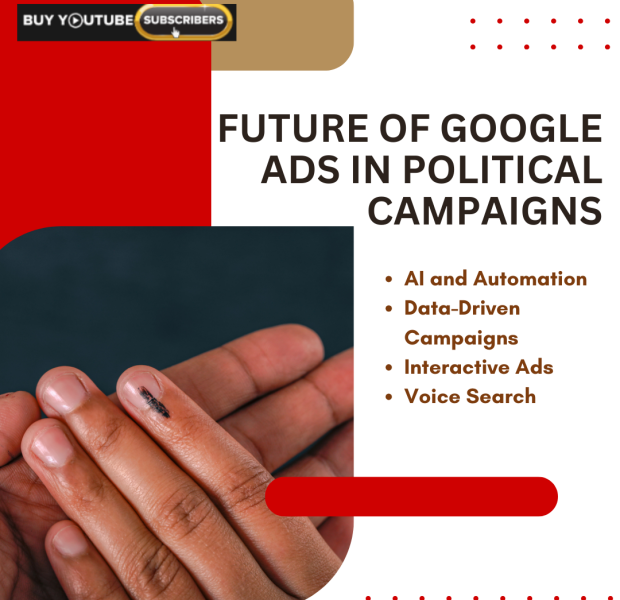Introduction to Google Ads and PPC Campaigns in Political Marketing
In today’s digital age, political marketing has shifted significantly from traditional methods like door-to-door canvassing and print media to more modern, tech-driven strategies. One of the most potent tools political campaigns can use is Google Ads and PPC campaigns in political marketing. These strategies help candidates reach a broader audience, engage with potential voters, and fine-tune their messaging in real-time.
But why are Google Ads and PPC campaigns such game-changers in political marketing? The answer lies in their ability to provide real-time results, targeted audience reach, and flexibility in budgeting.
Why Political Campaigns Should Leverage Google Ads?
Political campaigns need to be where the voters are—online. In today’s digital age, it is crucial for campaigns to leverage platforms like Google Ads and PPC campaigns, which provide a direct route to voters actively searching for political content or open to discovering more about specific candidates. These digital tools play a significant role in shaping public perception and engagement.
Advantages of Using Google Ads in Political Campaigns:
-
- Targeted Reach: Google Ads’ advanced targeting capabilities allow campaigns to precisely target specific demographics, regions, or interests. This means your political message reaches those who are more likely to be influenced by it, whether they are young voters interested in environmental issues or older voters concerned about healthcare.
- Real-Time Analytics: One of Google Ads’ most significant benefits is the access to immediate data and analytics. Campaign managers can track the performance of their ads in real time, allowing them to adjust the campaigns quickly based on metrics such as click-through rates, voter engagement, and conversion rates. This ensures the campaign remains dynamic and responsive to voter behavior.
- Cost Efficiency: Unlike traditional advertising methods, PPC campaigns ensure you only pay when someone interacts with your ad by clicking on it. This cost-effective approach ensures that every dollar spent is directed towards actual engagement, making it easier to manage budgets and maximize the impact of your advertising spend.
- High Visibility: Google Ads are designed to appear at the top of search results, ensuring that your political message is among the first things voters see. This high visibility increases the chances that potential voters will engage with your campaign, enhancing your candidate’s presence and recognition.
- Versatile Campaigns: Google Ads offers various formats, from text ads that convey concise messages to video ads that can deliver more detailed storytelling. This versatility allows campaigns to choose the most effective way to communicate their platform and values, catering to the diverse preferences of the electorate.
By leveraging Google Ads and PPC campaigns in political marketing, your campaign can build momentum, connect with voters, and establish a robust digital presence. This digital strategy not only amplifies your message but also ensures that you can engage with the electorate in a meaningful and impactful way, ultimately contributing to the success of your political campaign.
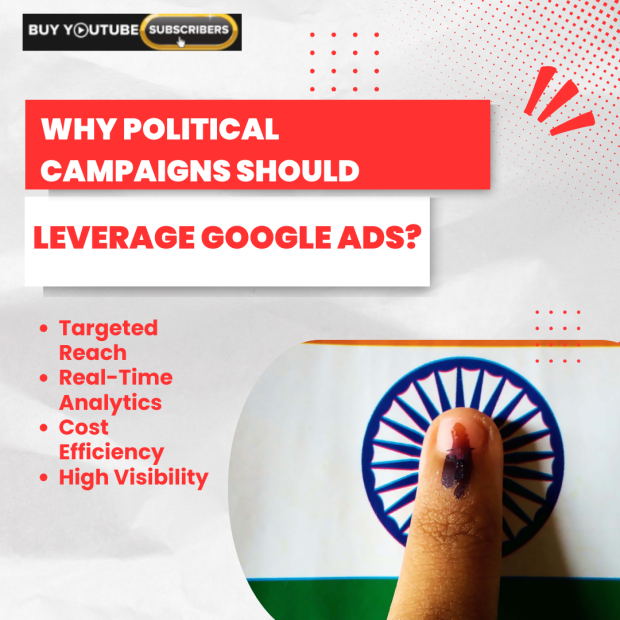
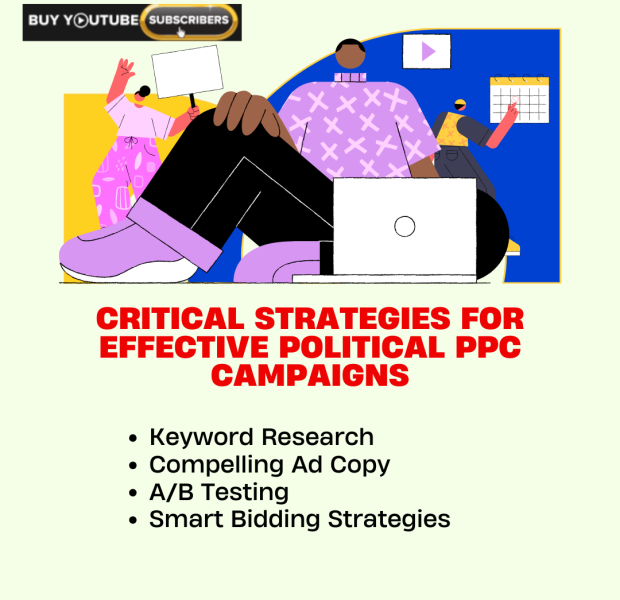
Critical Strategies for Effective Political PPC Campaigns
Successful political PPC campaigns depend on a well-balanced mix of data analysis, creative approaches, and strategic planning. Our company is confident that integrating these detailed strategies will ensure a high return on investment (ROI) for political candidates:
1. Keyword Research:
-
- Begin by identifying the keywords voters actively use in their search queries, such as “2024 elections,” “best political candidate,” or specific local issues relevant to your campaign.
- Utilize negative keywords to filter out irrelevant search results, ensuring your ads reach the most pertinent audience and increase relevancy.
2. Compelling Ad Copy:
-
- Craft clear, concise, and impactful messaging, emphasizing what sets your candidate apart.
- Incorporate a strong call-to-action (CTA) to drive engagement, such as “Vote Now,” “Discover [Candidate’s] Vision,” or “Learn More About [Candidate].” The CTA should inspire immediate action from potential voters.
3. A/B Testing:
-
- Conduct A/B testing regularly to compare different versions of ads and identify which performs better. This should include variations in not only the ad copy but also elements like headlines, images, targeting criteria, and even bid strategies.
- Analyzing test results will help refine your approach and allocate resources more effectively.
4. Smart Bidding Strategies:
-
- Leverage automated bidding techniques to optimize your campaign results based on set goals. Whether you aim to maximize conversions, clicks, or awareness, automated bidding can help achieve these objectives with less manual intervention.
- Adapt your bidding strategy to align with the different phases of your campaign, such as focusing on clicks for awareness-building at the early stages and shifting towards conversions as election day approaches.
By carefully implementing these strategies, political candidates can effectively engage with their target audience, communicate their message clearly, and ultimately achieve their campaign objectives with a robust PPC approach.
Using Google Ads for Local vs. National Political Campaigns
Whether you’re running a national campaign or focusing on local constituencies, Google Ads can be tailored to fit your specific needs. They provide powerful tools for effectively engaging with your target audience.
Local Political Campaigns:
-
- Geo-targeting: This feature lets you precisely target voters within specific towns, cities, or districts. By narrowing down your audience geographically, you can ensure that your ads are only seen by those who matter most to your campaign’s goals. This approach maximizes the relevance of your messaging and increases the efficiency of your advertising spend.
- Localized Messaging: Crafting messages that resonate with local issues, culture, and voters is crucial for local campaigns. By highlighting community-specific concerns and understanding local culture, candidates can build a stronger connection with their electorate, leading to higher engagement and support.
- Budget-Friendly: Local campaigns often operate with smaller budgets compared to national initiatives. Google Ads offers a flexible platform that allows campaigns to allocate resources strategically, focusing on the most critical areas and demographics. This ensures that even with limited funds, local campaigns can make a significant impact.
National Political Campaigns:
-
- Broader Reach: National campaigns benefit from reaching millions of voters across various states and regions. Google Ads enables campaigns to scale their messaging and engage a diverse audience, essential for spreading a candidate’s vision and platform on a larger scale.
- Broader Issues: The messaging for national campaigns typically focuses on wider political issues that affect all voters, such as healthcare, education, and economic policy. By addressing these widespread concerns, national campaigns can unify voters under common goals and increase their appeal across different demographics.
- Higher Budget Flexibility: National campaigns often have the advantage of larger budgets, enabling them to invest in more expansive advertising strategies. This flexibility allows for a multifaceted approach, incorporating various ad formats and platforms to ensure maximum visibility and impact.
The distinction between local and national campaigns lies in their scope and focus, yet both benefit significantly from the strategic use of Google Ads and PPC campaigns in political marketing. By leveraging these tools, political campaigns can effectively communicate their messages, mobilize supporters, and ultimately achieve their electoral goals.
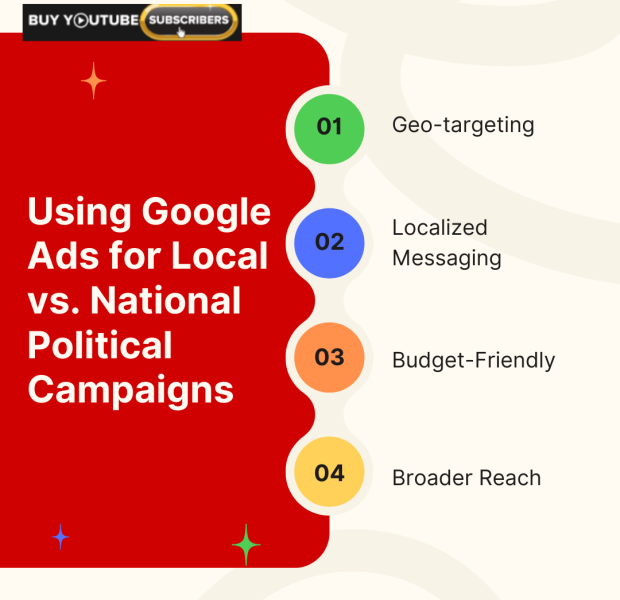
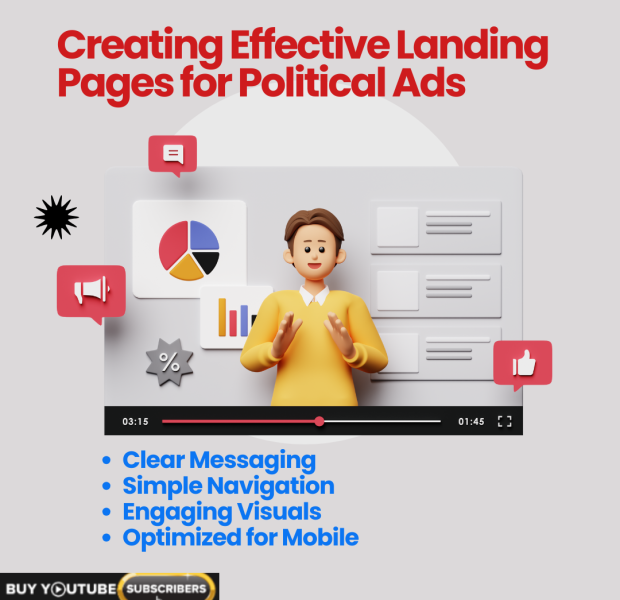
Creating Effective Landing Pages for Political Ads
A well-structured landing page is critical for turning clicks into votes. A successful political campaign hinges on its ability to connect with voters, and landing pages serve as a digital handshake, making that first impression count. Every time a voter clicks on your ad, the landing page must guide them toward an action, whether learning more about the candidate or donating to the campaign. These pages are not just about information but about persuasion and engagement.
Essential Features of a Political Campaign Landing Page:
-
- Clear Messaging: Reiterate the ad’s message with bold headlines that immediately capture attention and convey the campaign’s core values and objectives. The messaging should be concise yet impactful, leaving no room for ambiguity.
- Simple Navigation: Ensure that the page is easy to navigate with clear CTAs like “Donate,” “Volunteer,” or “Learn More.” The design should be intuitive, allowing users to find information quickly and without frustration, enhancing their overall experience.
- Engaging Visuals: Use videos or images of the candidate engaging with voters, attending community events, or speaking at rallies. These visuals should evoke emotion and humanize the candidate, making them relatable and trustworthy in the eyes of the electorate.
- Optimized for Mobile: With most searches coming from mobile devices, ensure the landing page is responsive. It should maintain its functionality and aesthetic appeal across all devices, from smartphones and tablets to desktops, catering to the diverse ways voters access information.
- Trust Elements: If you’re asking for donations, include testimonials, endorsements, and secure payment gateways. Highlight the support of influential figures or community leaders and ensure that any financial transactions are secure and transparent to build confidence among potential donors.
Our company emphasizes that a political landing page should build trust and resonate with voters, encouraging them to take the next step. It’s not just about presenting information; crafting an experience that aligns with the voters’ values and inspires them to engage further with the campaign. A strong landing page can significantly improve the effectiveness of political Ads run on Google, enhancing voter engagement and campaign success.
Ad Extensions in Political Google Ads Campaigns
Google Ad extensions are a valuable tool for political campaigns, enabling them to incorporate additional details into their online advertisements. This added information makes the ads more engaging, informative, and ultimately more effective in reaching potential voters.
Critical Ad Extensions for Political Campaigns:
1. Sitelink Extensions: These allow campaigns to include links to specific pages on their website, such as “Campaign Issues,” “Volunteer,” or “Donate.” By directing potential supporters to these pages, campaigns can increase engagement and participation.
2. Call Extensions: This feature includes a contact phone number in the ad, allowing voters to contact the campaign directly. By facilitating direct communication, campaigns can answer questions and build a stronger connection with their audience.
3. Location Extensions: These extensions display the location of campaign offices or upcoming rallies, helping supporters easily find and attend events. This tool is handy for engaging local communities and increasing event turnout.
4. Callout Extensions: Designed to highlight key achievements or issues supported by the candidate, callout extensions provide concise and attention-grabbing snippets of information. This helps to communicate the candidate’s priorities to voters quickly.
Utilizing ad extensions increases the visibility and relevance of your Google Ads. It enhances your overall Google Ads and PPC campaigns in political marketing strategy, driving better results and voter engagement.
Retargeting Strategies in Political PPC Campaigns
Retargeting is one of the most effective strategies within PPC campaigns, particularly in politics. It allows political campaigns to strategically target individuals who have previously visited their website but did not take any further action, thereby maximizing the potential for conversion.
How Retargeting Works for Political Campaigns:
- Build Awareness: Retargeting keeps the candidate fresh in the electorate’s minds by showing ads to voters who have previously interacted with the campaign’s website. This continuous presence helps build familiarity and trust.
- Personalized Ads: Campaigns can serve personalized ads tailored to an individual’s interests by utilizing data from previous user interactions. For instance, if someone visited the donation page but didn’t contribute, they might see a follow-up ad with a compelling call to action encouraging donations.
- Multiple Touchpoints: Retargeting ensures voters are engaged across various platforms and devices, from social media to web browsing. This multi-channel approach ensures the campaign message is consistently delivered and reinforced.
Our company employs advanced retargeting techniques to ensure political candidates remain constantly in voters’ minds, ultimately improving campaign reach and effectiveness.
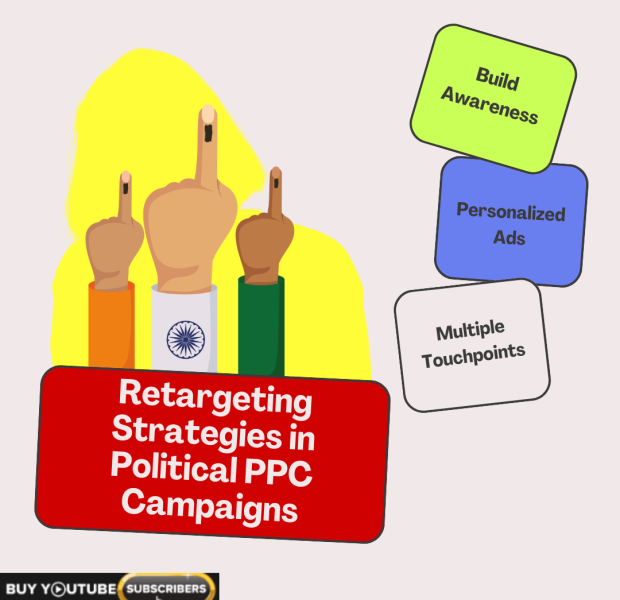
Geo-Targeting and Location-Based Advertising for Political Campaigns
Geo-targeting allows political campaigns to deliver ads to voters based on their specific geographic location. This precision-targeted strategy ensures that political advertisements reach the right audiences at the optimal time, maximizing the campaign’s impact.
Critical Aspects of Geo-Targeting:
1. Zip Code Targeting: This feature allows campaigns to target voters in specific zip codes that are of strategic importance. By focusing on these areas, campaigns can allocate resources more effectively and tailor messages to resonate with local issues.
2. State and District Targeting: Delivering ads relevant to specific political races ensures that messaging is localized and pertinent to voters’ concerns. Addressing their unique regional interests helps build stronger connections with constituents.
3. Event-Based Targeting: Campaigns can use geo-targeting to advertise during key local events such as debates, rallies, or town hall meetings. By doing so, they can capture the attention of audiences already engaged with the political process, increasing the likelihood of voter interaction.
Geo-targeting is a powerful component of Google Ads and PPC campaigns in political marketing. It makes campaigns more effective by precisely reaching voters in critical locations. This method enhances overall campaign performance and supports strategic electoral objectives.
Custom Audiences and Voter Targeting in Google Ads
Political campaigns can create custom audiences to ensure their ads reach the right voters effectively. Campaigns can segment voters based on interests, behavior, and demographics by utilizing custom audiences, allowing for highly targeted and personalized outreach.
How Custom Audiences Work in Political Marketing:
- Interest-Based Audiences: Campaigns can identify and target voters interested in specific issues such as healthcare, education, or the economy. This enables tailoring messages to resonate with voter concerns, potentially increasing engagement and support.
- Demographic Targeting: By segmenting voters according to age, gender, or political affiliation, campaigns can tailor messaging that appeals to distinct demographic groups. This personalized approach enhances the relevance and impact of campaign communications.
- Lookalike Audiences: Using data from existing supporters, campaigns can identify and target new potential voters who share similar characteristics or behaviors. This strategy expands the campaign’s reach by connecting with individuals more likely to be receptive to the candidate’s message.
Custom audiences empower political campaigns to concentrate their efforts on voters most likely to support their candidate, ensuring resources are used efficiently and effectively.
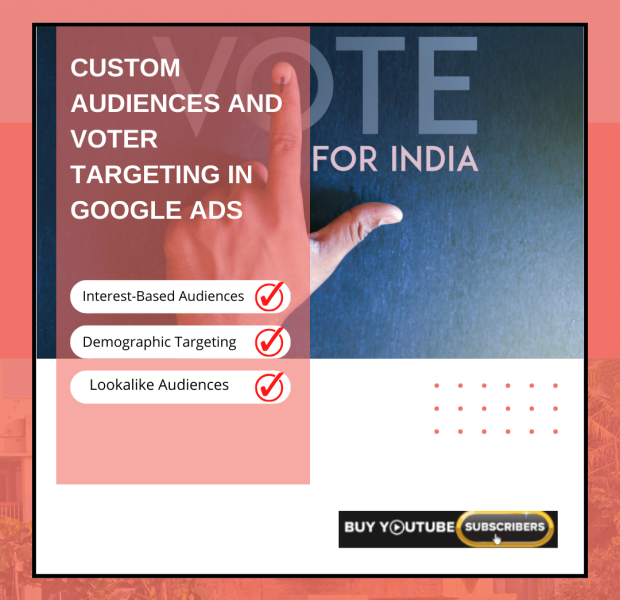

Harnessing the Power of Display Ads in Political Marketing
Display ads are powerful tools for disseminating a candidate’s message across millions of websites and apps. They typically manifest as banners, images, or videos that accompany online content, offering a versatile medium for voter engagement.
Advantages of Display Ads in Political Campaigns:
1. Widespread Reach: Display ads can appear on a wide range of websites, thereby reaching voters wherever they browse online. This extensive reach ensures maximum visibility for campaign messages.
2. Visual Impact: With their eye-catching imagery and dynamic videos, display ads can make a memorable impression on voters, helping to reinforce the candidate’s branding and message.
3. Affordable Branding: Unlike traditional media, display ads are cost-effective for building awareness and increasing a campaign’s visibility across digital platforms.
4. Retargeting Capabilities: Display ads are particularly effective for retargeting voters who have visited a campaign’s website but did not take action. This technique helps keep the campaign at the forefront of voters’ minds and encourages further engagement.
Future of Google Ads in Political Campaigns
The future appears promising. As digital marketing continues to evolve and expand, so will the strategies employed in political campaigns.
Emerging Trends:
- AI and Automation: More campaigns will adopt AI-powered tools to automate bidding and targeting strategies. This technological advancement will allow for more precise and efficient allocation of campaign resources, enhancing overall effectiveness.
- Data-Driven Campaigns: Big data will become increasingly prevalent in analyzing and understanding voter behavior and preferences. This data-driven approach enables campaigns to craft more informed and impactful strategies.
- Interactive Ads: Voters will encounter more interactive and immersive ads, providing opportunities for greater engagement and connection with the candidate’s platform. These ads can include interactive elements such as polls or quizzes, fostering a more engaging voter experience.
- Voice Search: As voice search becomes more common, particularly among tech-savvy voters, campaigns must optimize their content for voice-based queries. This adaptation will ensure the campaign’s message is accessible and relevant across various search platforms.
Our company is excited to embrace these innovations and will continue to assist political campaigns in leveraging the latest tools and trends to achieve their goals. We are committed to driving success in political marketing endeavors by staying at the forefront of technological advancements.
